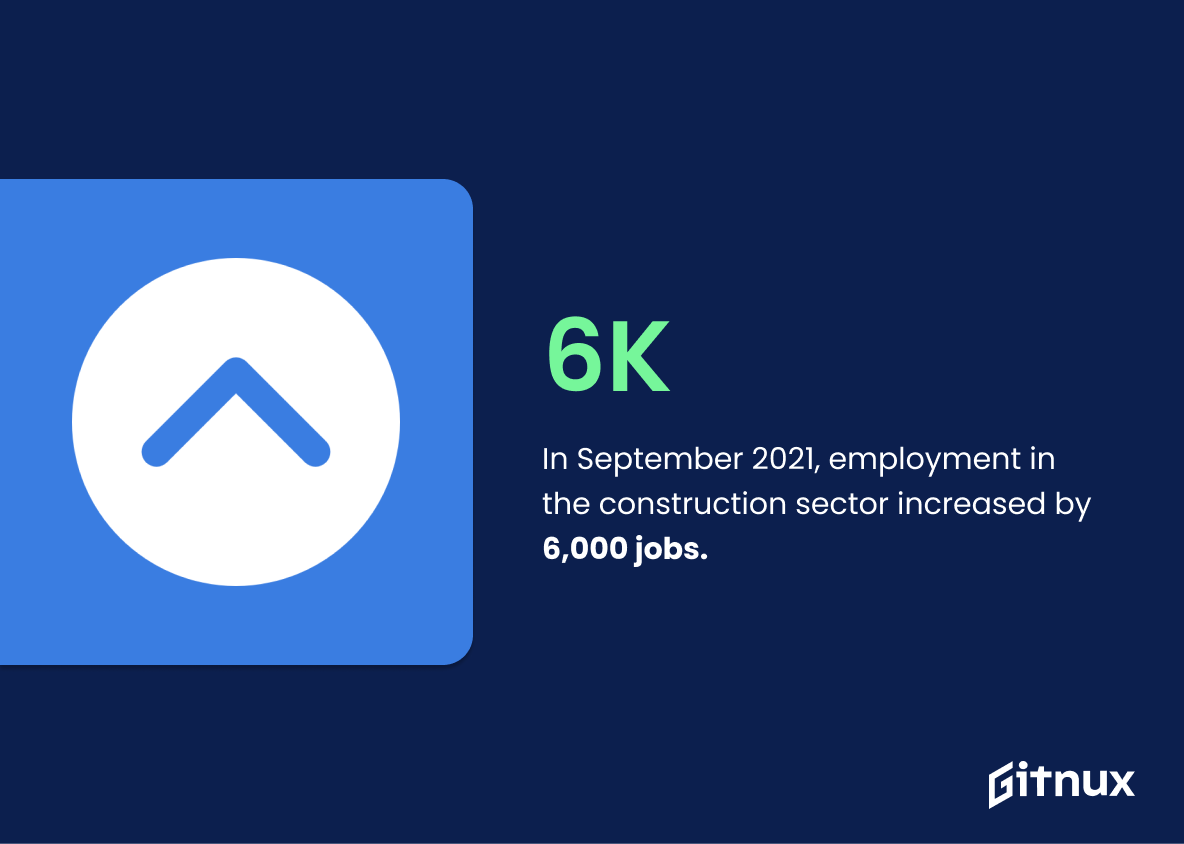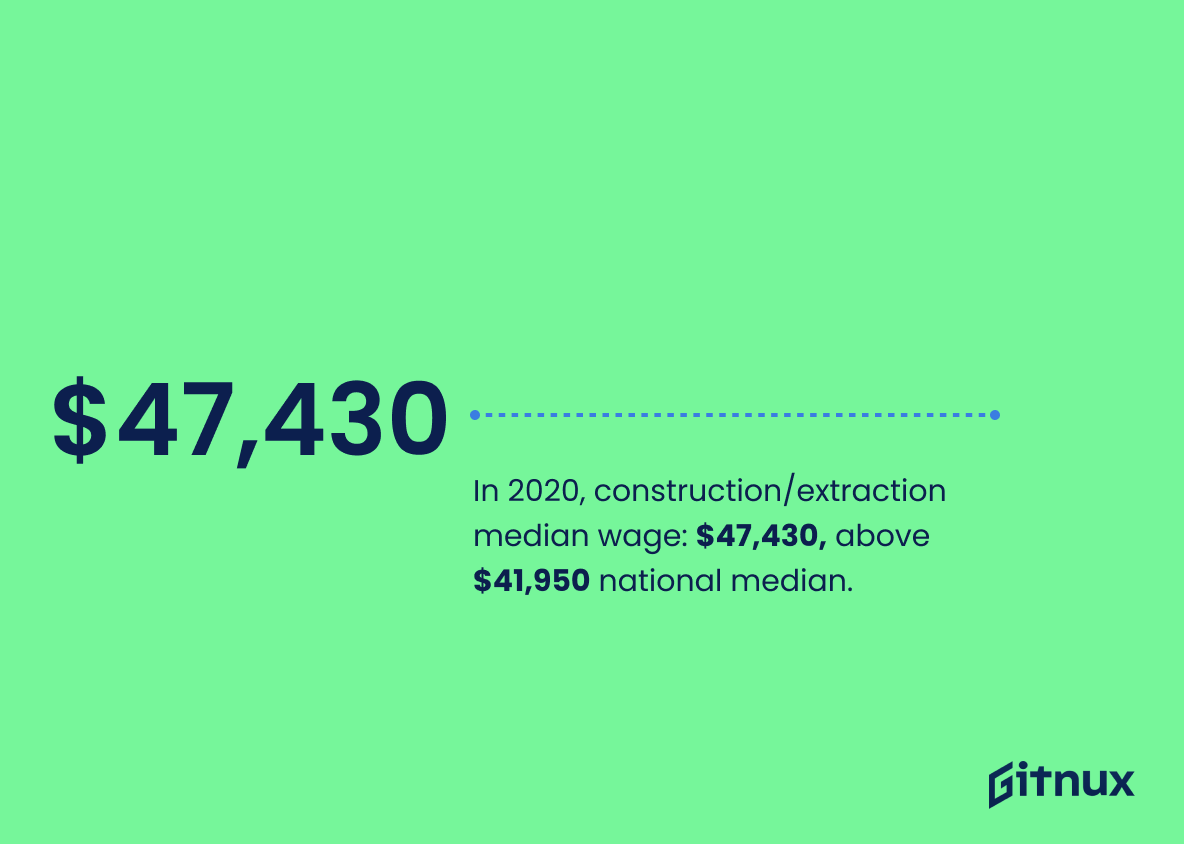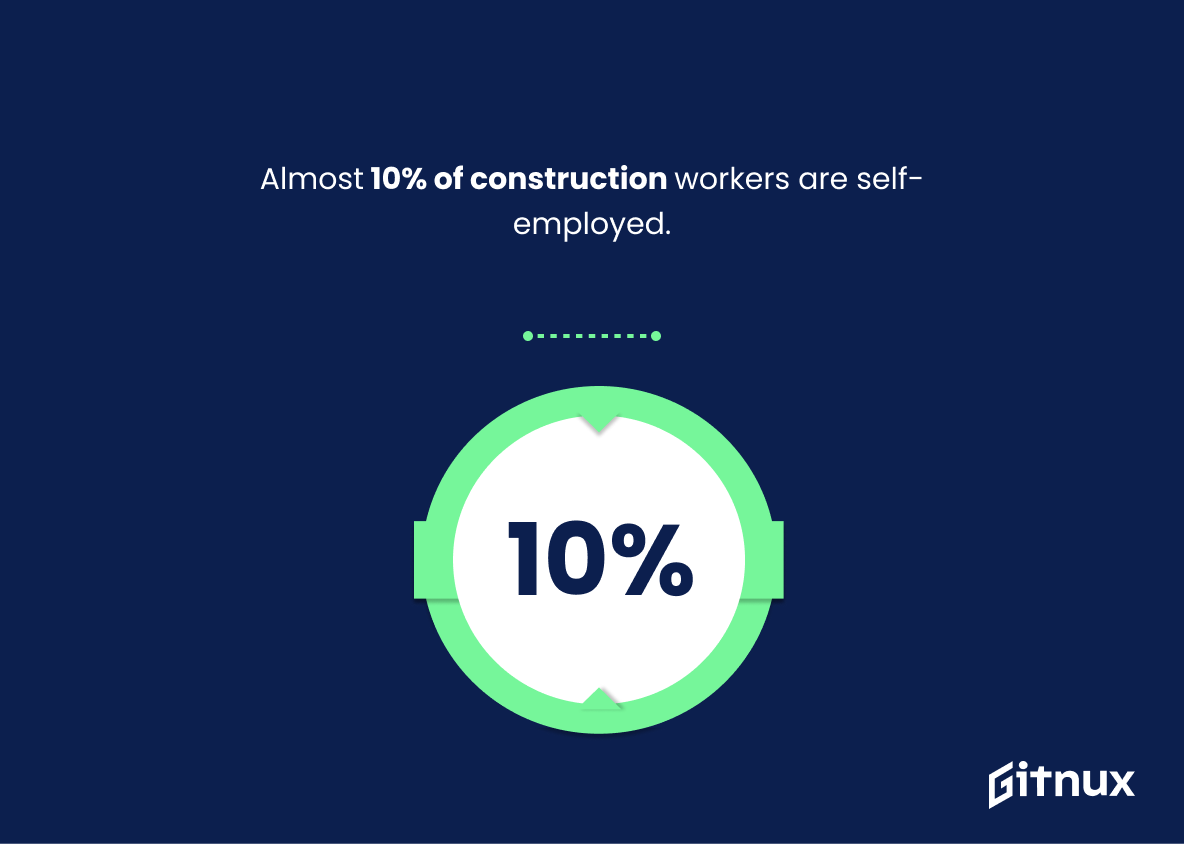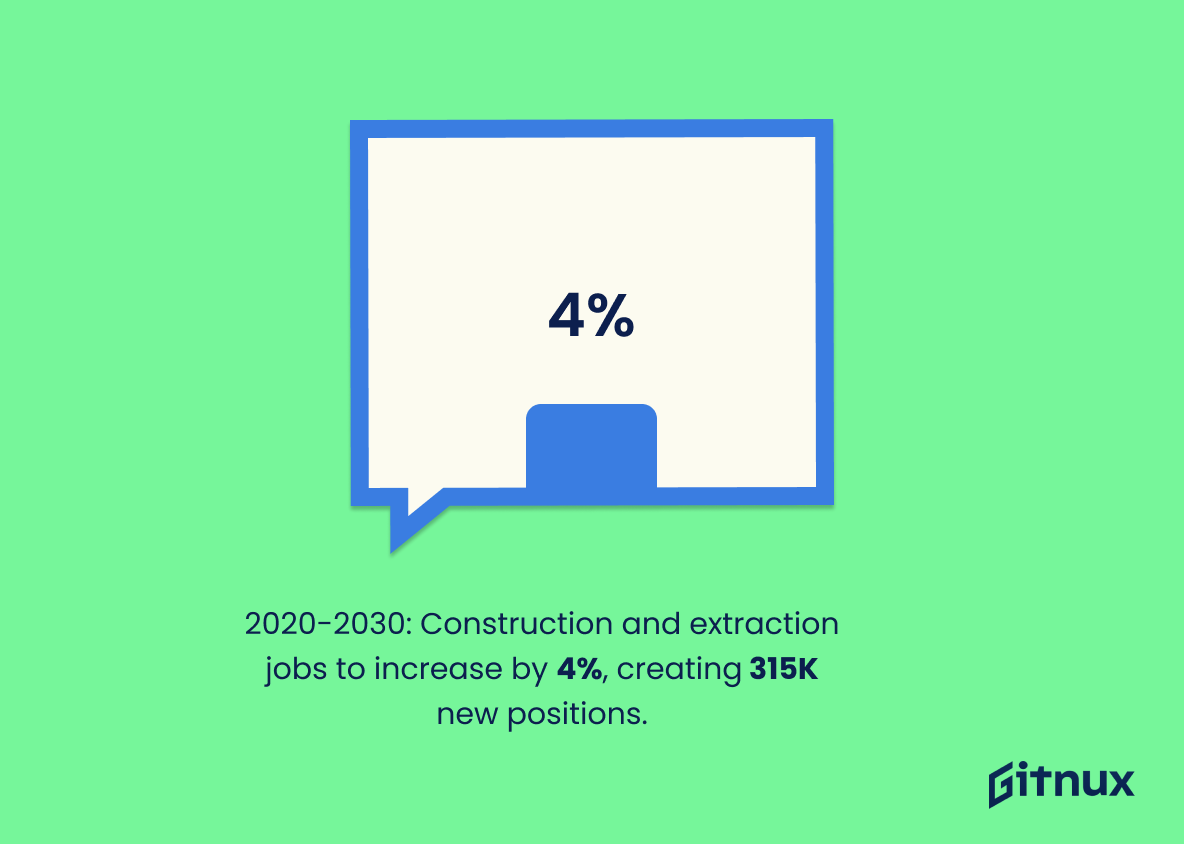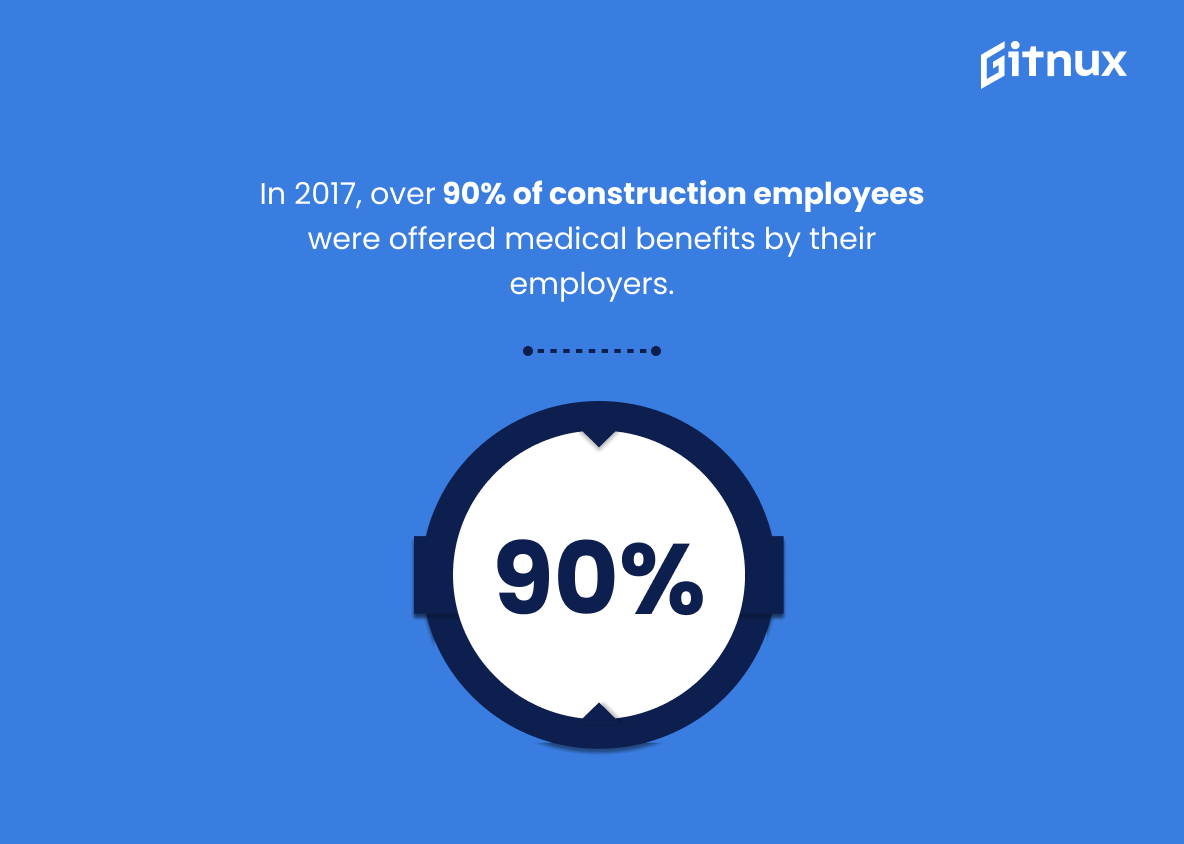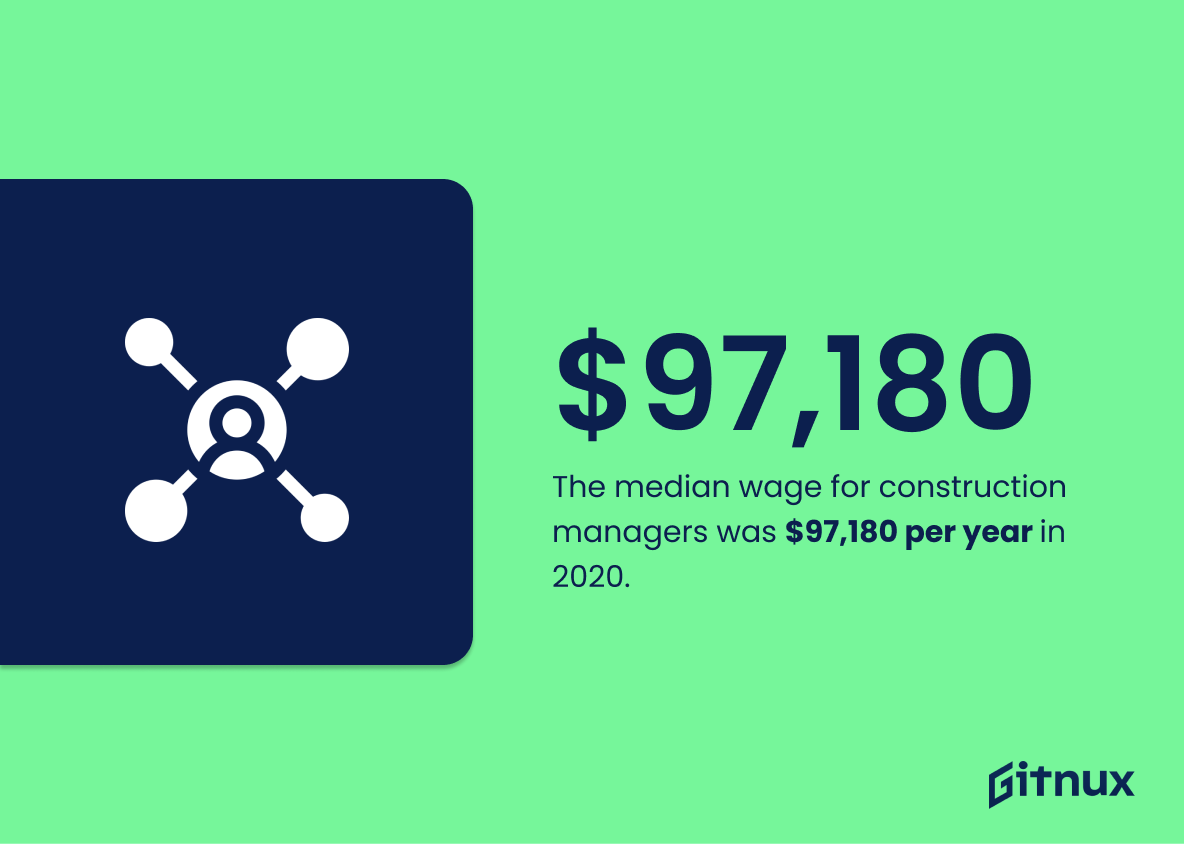The construction industry is an important part of the U.S. economy, and its employment statistics provide insight into how it has been affected by recent events such as the COVID-19 pandemic. This blog post will explore 20 different construction employment statistics from 2020 to 2021 that demonstrate the impact of these events on this sector, including job losses due to the pandemic, increases in spending and wages for workers, changes in demographics within the workforce, and more. We’ll also look at some emerging trends like drone usage among contractors that are helping shape this ever-evolving industry.
This statistic is a powerful indicator of the importance of the construction industry in the United States. It shows that the industry is a major employer, providing jobs for millions of people and contributing significantly to the economy. This statistic is especially relevant in the context of a blog post about Construction Employment Statistics, as it provides a snapshot of the current state of the industry and its importance to the nation.
The construction industry lost around 975,000 jobs between February and April 2020 due to the COVID-19 pandemic.
This statistic is a stark reminder of the devastating impact the COVID-19 pandemic has had on the construction industry. It highlights the immense job losses that have occurred in a short period of time, and serves as a warning of the potential economic consequences of the pandemic. This statistic is an important piece of information to consider when discussing construction employment statistics.
Construction Employment Statistics Overview
In September 2021, employment in the construction sector increased by 6,000 jobs.
This statistic is significant in the context of Construction Employment Statistics because it indicates a positive trend in the industry. The 6,000 job increase in September 2021 shows that the construction sector is growing and creating more opportunities for employment. This is an encouraging sign for the industry and could be a sign of a strong recovery from the economic downturn caused by the pandemic.
As of June 2021, 74% of construction firms are having trouble filling some hourly craft positions.
This statistic is a telling indication of the current state of the construction industry. It reveals that despite the industry’s growth, there is a shortage of skilled labor, making it difficult for construction firms to fill certain hourly craft positions. This shortage of skilled labor could potentially lead to delays in projects and higher costs for construction firms. As such, this statistic is an important factor to consider when discussing construction employment statistics.
In 2020, the median annual wage for construction and extraction occupations was $47,430, higher than the national median wage of $41,950.
This statistic is significant in the context of Construction Employment Statistics because it demonstrates that construction and extraction occupations are more lucrative than the national median wage. This indicates that these occupations are in high demand and can provide a stable source of income for those who pursue them. Furthermore, it highlights the potential for career growth and advancement in the construction industry.
Construction spending in the United States amounted to approximately $1.43 trillion in 2020.
The staggering amount of $1.43 trillion spent on construction in the United States in 2020 is a testament to the importance of the construction industry in the country. This figure highlights the sheer magnitude of the industry and its impact on the economy. It also serves as a reminder of the importance of construction employment statistics, which provide insight into the health of the industry and the job market.
Almost 10% of construction workers are self-employed.
This statistic is significant in the context of Construction Employment Statistics because it highlights the prevalence of self-employment in the industry. It indicates that a significant portion of the workforce is not bound by traditional employment contracts, and instead are taking control of their own career paths. This could have implications for the industry as a whole, as it could lead to a more flexible and diverse workforce.
In 2019, approximately 931,000 construction industry jobs were held by women, which is around 10.3% of the total.
This statistic is a powerful reminder of the importance of gender equality in the construction industry. It highlights the fact that, despite the fact that women make up a significant portion of the workforce, they are still vastly underrepresented in the industry. This statistic serves as a call to action for employers to create more equitable opportunities for women in the construction industry, and to ensure that they are given the same opportunities as their male counterparts.
From 2020 to 2030, employment in construction and extraction occupations is projected to grow 4%, resulting in about 315,000 new jobs.
This statistic is a crucial piece of information for anyone interested in the future of construction and extraction occupations. It provides a clear indication of the potential for growth in the industry over the next decade, suggesting that there will be an abundance of new job opportunities in the field. This is an encouraging sign for those looking to enter the industry, as well as those already employed in the sector, as it suggests that the industry is likely to remain strong and vibrant in the years to come.
In 2020, the fatal injury rate for the construction industry was 9.7 per 100,000 full-time equivalent workers.
The fact that the fatal injury rate for the construction industry in 2020 was 9.7 per 100,000 full-time equivalent workers is a sobering reminder of the risks associated with this line of work. It highlights the importance of safety protocols and regulations in the construction industry, and the need for employers to prioritize the safety of their workers.
16.6% of construction businesses in the U.S. are owned by veterans.
The fact that 16.6% of construction businesses in the U.S. are owned by veterans is a testament to the hard work and dedication of those who have served our country. It is a reminder that veterans have the skills and determination to succeed in the construction industry, and that they are an important part of the workforce. This statistic is a powerful reminder of the value of veterans in the construction industry and the importance of supporting them in their endeavors.
In 2017, over 90% of construction employees were offered medical benefits by their employers.
The fact that over 90% of construction employees were offered medical benefits by their employers in 2017 is a testament to the industry’s commitment to providing a safe and secure working environment. This statistic speaks to the industry’s dedication to the well-being of its employees, and is a sign of the industry’s commitment to providing quality jobs. It is a positive indicator of the industry’s commitment to its employees and the overall health of the industry.
The median wage for construction managers was $97,180 per year in 2020.
This statistic is a valuable insight into the current state of the construction industry, as it provides a clear indication of the average salary for construction managers. It is an important indicator of the financial stability of the industry, as it shows the level of compensation that construction managers can expect to receive for their work. Additionally, it can be used to compare the wages of construction managers across different regions and countries, providing a useful benchmark for employers and employees alike.
Conclusion
The construction industry is a major contributor to the U.S. economy, with approximately 7.1 million employees in 2020 and total spending of $1.43 trillion that same year. Despite job losses due to the COVID-19 pandemic, employment in this sector has been steadily increasing since April 2020 and reached 6,000 new jobs in September 2021 alone. The median annual wage for construction workers was higher than the national average at $47,430 per year as of 2020 while almost 10% were self-employed contractors or subcontractors working on their own terms and conditions without benefits such as health insurance coverage or retirement plans provided by employers like other full-time employees do have access to these benefits from their employer’s side . Additionally, 74% of firms are having difficulty filling some hourly craft positions due to labor shortages which could be attributed partly because 16 percent of all businesses are owned by veterans who may not always be available for work when needed , but also because many young people aged 16–24 (nearly 59K) choose this field over others despite its high risk factor associated with it (9 fatalities/100k FTEs). Moreover women make up only 10 %of workforce even though they earn more than men ($97180 vs 47 430 respectively ) As technology advances so does our ability to build faster safer structures using drones 40 % companies now use them making us wonder what will come next?
References
0. – https://www.score.org
1. – https://www.agc.org
2. – https://www.nawic.org
3. – https://www.bls.gov
4. – https://www.statista.com
